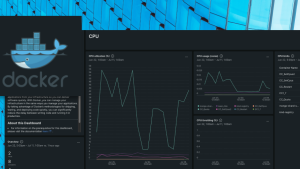To help you monitor your Amazon EC2, Azure VM instances more effectively, we’ve introduced significant updates to our cloud host monitoring capabilities, giving you enhanced visibility into your Amazon EC2 and Azure VM infrastructure without the need for complex setup or configuration. In this blog post, we'll explore these recent changes and how they can benefit your cloud host monitoring strategy.
A simplified monitoring experience for cloud hosts
Traditionally, monitoring cloud host instances with New Relic required installing infrastructure agents on each virtual machine. While effective, this approach could be cumbersome (but has its own advantages in terms of coverage of metrics), especially in dynamic cloud environments where instances are frequently provisioned or terminated. But with this update, we’re providing you with a new experience for Amazon Elastic Compute Cloud (Amazon EC2) and Azure Virtual Machines (Azure VMs).
This enhancement simplifies your monitoring setup significantly, eliminating the need for manual agent installations and configuration. Instead, New Relic detects and monitors your cloud host instances, creating entities for the same, providing comprehensive insights into each host’s performance, resource utilization, and health.
To get started with agentless Amazon EC2 monitoring, you’ll need to use Amazon CloudWatch Metric Streams integration. For Azure VM monitoring, you’ll need to use Azure Monitoring integration. Please note that agentless Cloud host monitoring is not applicable for API Polling based integrations.
Once you’ve configured agentless monitoring, select Infrastructure > Host, as shown below, to see new entities.
- Explore the Hosts view to see the automatically detected cloud host instances, including Amazon EC2 and Azure VMs instances.
- Dive into individual entity views to analyze performance metrics, resource utilization, and health status.
- Leverage New Relic alerting and reporting capabilities to stay informed about potential issues and optimize your cloud host environment for peak performance.
Unified entity creation for cloud host resources
Another notable improvement in New Relic's Amazon EC2, Azure VM, and GCP CE monitoring capabilities is the introduction of a single entity for each cloud host resource, regardless of how the instrumentation is performed. Previously, separate entities might have been created based on the monitoring approach used (for example, the New Relic infrastructure agent vs. the Prometheus agent vs. agentless [API polling, CloudWatch Metric Streams/Azure Monitor]).
Now, whether you're monitoring Amazon EC2 instances, Azure VMs, or GCP CE instances, New Relic consolidates the monitoring data into a unified entity for each resource. This unified view simplifies navigation and troubleshooting, enabling you to quickly identify and address performance issues across your cloud environment.
Monitoring Amazon EC2, Azure VM, and GCP CE instances are essential for ensuring the reliability, performance, and scalability of your applications running on the respective public cloud. With the recent updates to New Relic monitoring capabilities, monitoring cloud hosts has never been easier. By simplifying the setup process and providing unified visibility across multi-cloud environments, New Relic empowers organizations to effectively monitor and manage their Amazon EC2, Azure VM, and GCP CE infrastructure with confidence.
次のステップ
Getting started with Amazon EC2, Azure VM, and GCP CE monitoring using the latest updates from New Relic is straightforward:
- Ensure you have a New Relic account and appropriate permissions to access monitoring features.
- Sign up for a free New Relic account. Your account includes 100 GB/month of free data ingest, one free full-platform user, and unlimited basic users.
- Learn more about our AWS integrations, Azure integrations, and GCP integrations.
本ブログに掲載されている見解は著者に所属するものであり、必ずしも New Relic 株式会社の公式見解であるわけではありません。また、本ブログには、外部サイトにアクセスするリンクが含まれる場合があります。それらリンク先の内容について、New Relic がいかなる保証も提供することはありません。



